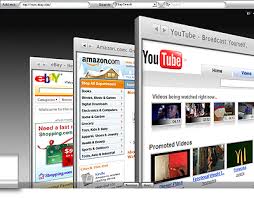There is only one reason why website owners create landing pages – conversions. Landing pages can be placed in e-mail, on video-sharing websites, blogs and other web properties, but it’s often easy to sabotage their potential of obtaining information from the visitor.
You just can’t go with an ‘if you built it, they will come’ theory for landing pages. Avoiding mistakes on landing pages is one of the most crucial aspects of an integrated online business strategy (and it’s also one of the most overlooked). At the end of the day, the don’ts of landing pages can stand between success and failure for website owners.
1. Slow loading time
Poor loading time is now taken seriously by search engines. It also irritates people. Modern internet users don’t want to wait for 20-30 seconds for a page to appear – they want to take quick action and leave. As web design pro William Bleimeister puts it, “If your page is slow to load or confusing, a client will have no hesitations about hitting “x” and moving on to another site that is more user friendly.” This problem can cost you a lot of money in potential business.

Gomez.com and Akamai did some surveys and the results revealed that 50% of the web users who were part of the survey expect sites to load within 2 seconds, and they won’t hesitate to leave if the page doesn’t load within 3 seconds. You can ensure your landing page doesn’t take too long to load by compressing images, using cache plugins and taking assistance from a CDN (Content Delivery Network).
2. Unclear copy
Good copy is essential to make the visitor take option. A landing page that doesn’t have clear copy is like a bicycle without paddles – not effective at doing what it does best. What makes unclear copy? Inserting a call to action after the first sentence, using exclamation marks and relying on jargon words.
The fundamentals of good copy include benefits of opting in and how it will improve the life of visitors. The heading and the description should be obvious within few seconds (users don’t want to think too much, they’re already doing that on routine).
3. Typical design
The design of your landing pages should be outside the typical website theme. You don’t want the same templates, fonts, colors and graphics because custom pages without a visual flair would have a hard time in grabbing attention.
Don’t forget that internet users are humans (visual creatures) and a good design will create the first impression on sight. The design should also focus on promotion of a single call to action, and it’s important to avoid cross-selling different items on a product page, even if they’re relevant.
4. Unresponsive copy
Every other day, there are reports that the number of smartphone internet users are on the rise. Most mobile users are likely to leave a landing page if it’s not responsive, because there is literally zero incentive for them to stay (they won’t go through the burden of zooming in most instances).
There are several benefits of using a responsive design for landing pages such as integrated analytics, single URL redirection and increased conversions through the form of mobile users.
Avoiding these don’ts of landing pages can greatly increase the chances of visitors taking action on your landing page and allow your business to gain authority.



